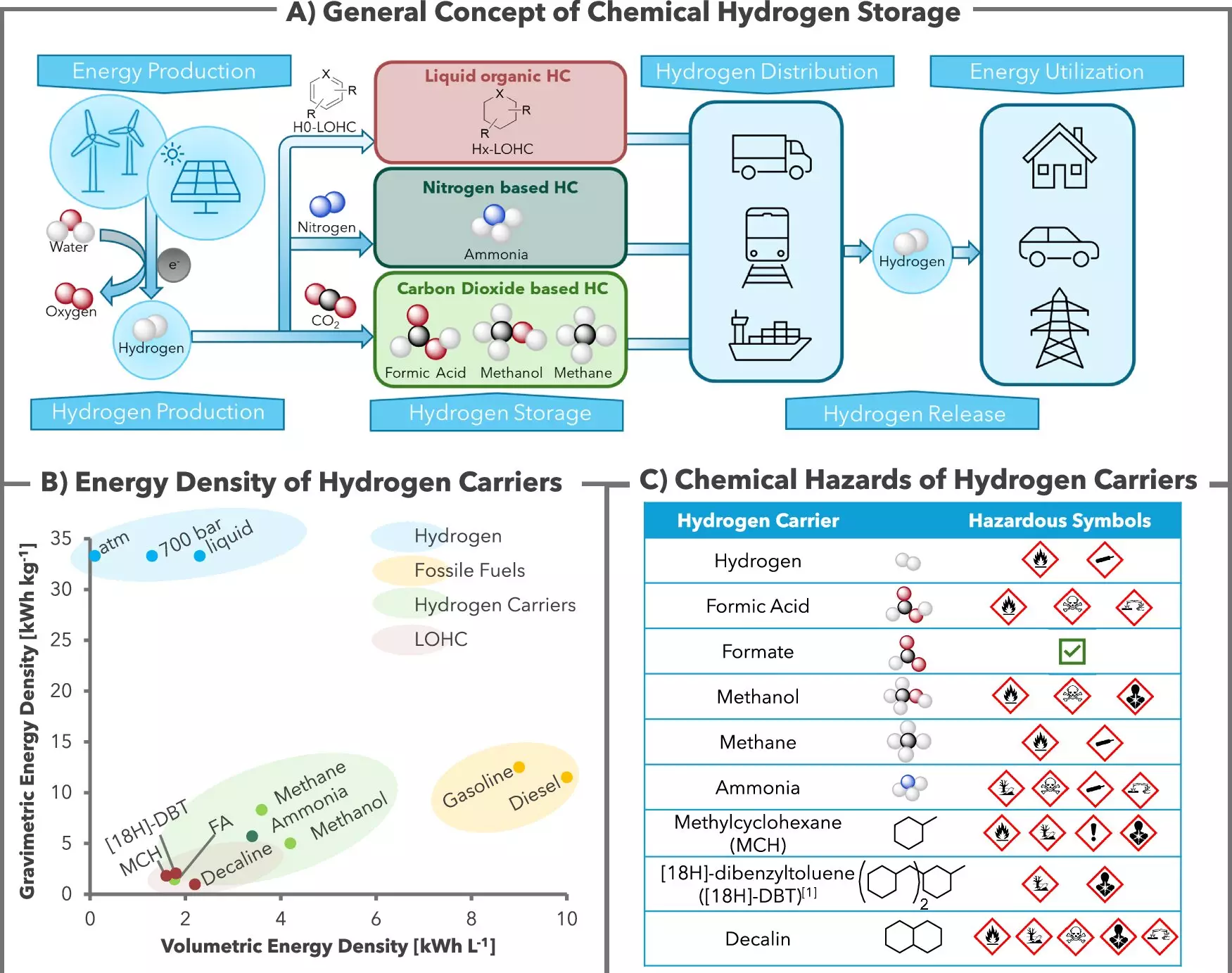The quest for efficient hydrogen storage solutions is critical as the world increasingly pivots towards sustainable energy systems. As researchers strive to enhance the viability of hydrogen as a green energy carrier, new findings from a collaboration between the Leibniz Institute for Catalysis (LIKAT) and H2APEX offer promising perspectives. This article delves into the innovative approach taken by these researchers, emphasizing the chemical processes employed and their potential implications for energy sustainability.
Hydrogen, despite being lauded as a key player in future energy scenarios, remains notoriously difficult to store. Its highly reactive and flammable nature necessitates innovative solutions that ensure safety and stability. Researchers from LIKAT and H2APEX have made significant strides by developing a homogeneous catalyst system. This system utilizes potassium bicarbonate—commonly recognized as a component of baking powder—to facilitate the safe chemical storage of hydrogen. By binding hydrogen gas with bicarbonate, they have created a stable compound that not only stores hydrogen effectively but also allows for its safe retrieval.
The catalyst involved in this reaction is ruthenium, a metal that has garnered attention due to its availability and effectiveness in catalyzing hydrogen reactions. The unique property of this system is that it is reversible; hydrogen can be absorbed and released from formate, a harmless salt formed from the reaction. This dual capability is essential for practical applications, allowing for flexibility in how hydrogen is managed within energy systems.
In the broader context of the energy transition, the implications of this research are profound. Hydrogen is viewed as a critical component of a clean energy future, with various potential storage media—like methanol, ammonia, and methane—being explored. However, compared to these alternatives, formic acid salts derived from bicarbonate offer distinct advantages. They are less toxic, environmentally friendly, and possess lower energy consumption requirements during processing and transportation.
The ability to store hydrogen safely and effectively using formate opens up practical applications, particularly in rural areas where renewable energy sources like wind and solar are underutilized during periods of excess generation. Here, hydrogen can be produced via electrolysis and subsequently converted into formate, ensuring energy is captured and stored efficiently. This system, essentially functioning like a battery, promises a smoother transition to renewable energy usage and storage.
One notable feature of the researchers’ methodology is its emphasis on environmental neutrality. Traditional hydrogen recovery processes often result in carbon dioxide (CO2) emissions, a significant concern in climate change discussions. However, the system developed by LIKAT and H2APEX ensures that CO2 is not released or generated, thus contributing to more sustainable practices. The focus remains on maintaining the integrity of the environment while effectively managing hydrogen.
The technical simplicity of controlling this hydrogen storage system allows for precise management of hydrogen binding and release by altering pressure conditions. This adaptable system not only simplifies its application but also enhances its efficiency and functionality in various energy contexts.
Looking forward, the partnership between LIKAT and H2APEX is transitioning towards commercialization with ambitious plans to develop a larger demonstrator. Their successes in the laboratory—including consistent cycles of hydrogen storage and retrieval—have set a robust foundation for future industries. With the launch of commercial production anticipated by the end of 2025, there is growing optimism that formate, as an energy carrier, could become mainstream, similar to fossil fuels which have dominated the energy landscape for years.
This work signifies more than a mere academic breakthrough; it embodies hope for a sustainable and less carbon-dependent future. As hydrogen storage demands evolve, systems incorporating formates and bicarbonate could represent practical solutions for advancing the hydrogen economy.
The revolutionary work spearheaded by the LIKAT and H2APEX teams exemplifies an approach not only grounded in scientific ingenuity but rooted in the pressing need for a cleaner, more sustainable energy future. Their findings could pave the way for transformative applications that leverage hydrogen’s potential, moving society closer to a true energy transition.

